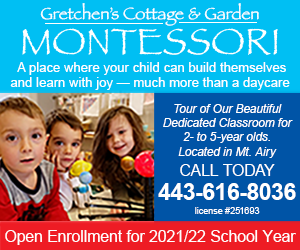Thanks to Gretchen Altergott of Gretchen's Cottage and Garden Montessori for contributing this article!
These are tough times for children and their parents, especially when it comes to school. We all want to give our children the best start in life and deciding where and how to educate them has become more complicated. As a result, many parents are discussing alternative ways to provide their children an education. More and more, they are weighting the pros and cons of public school, charter school, private school, homeschooling, on-line schools and co-ops. They are also considering different teaching methods or philosophies, such as teacher-centered, learner-centered, kinesthetic learning, and play-based learning. Most often, a child’s first experience with learning sets the tone for his or her future schooling and parents want to provide their child with a solid beginning.
I experienced the Montessori method of learning when I was a child and loved it. It makes sense that I would consider it for my son. I felt it was a good match for him and so my new career as a Montessori teacher began. To better explain why I believe this is a great foundation for learning, here are the five principles to Montessori:
Principle 1: Respect for the Child
Respect for the Child is the major principle of the Montessori method. Maria Montessori, who developed the Montessori method of teaching over 100 years ago, believed children should be respected. This was not a common practice in the early twentieth century. Respect is shown by not interrupting their concentration and giving them the freedom to make choices, do things for themselves, and to learn for themselves. A Montessori teacher models respect, as well as peaceful conflict resolution.
Principle 2: The Absorbent Mind
The Montessori education is built on the principle that children are constantly learning from the world around them. They absorb information from their world using their senses and build themselves using that information.
Principle 3: Sensitive Periods
The Montessori method believes that there are periods in a child’s development in which he or she is ready to learn particular skills. These are called sensitive periods and each one lasts until the child has acquired that skill. The time for each period is different for every child. Montessori teachers watch for these sensitive periods in order to provide the needed work for each individual child.
Principle 4: The Prepared Environment
The Montessori method has the guide or teacher carefully prepare the classroom so that the children can do things for themselves. The classroom is set up to promote freedom for children to explore materials of their choice and do so independently.
Principle 5: Auto Education
Children are capable of educating themselves (self-educate). They instinctively know what they need to learn to build themselves. If the guide provides the environment, guidance, and inspiration, the children can educate themselves.
Given a carefully prepared Montessori classroom, children intuitively know how to use the materials to build themselves. They are naturally curious and want to become independent and, with guidance, they can do this joyfully. This is a good foundation to productive live-long learning.
Gretchen Altergott has been a Montessori teacher for 10 years and has set up her classroom, inside and out, so children can develop their imagination and learning skills at their own pace in a safe and caring environment. For more information about Gretchen’s Cottage and Garden Montessori, call 443-616-8036.




